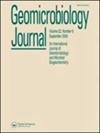Phosphate Solubilizing Bacteria Isolation Medium: Rock Phosphate or Tricalcium Phosphate?
IF 2.2
4区 环境科学与生态学
Q3 ENVIRONMENTAL SCIENCES
引用次数: 0
Abstract
Abstract Phosphorus is one of the essential elements limiting vegetative production in the world. Although phosphorus is abundant in soils, a tiny part is available for plants. With phosphate solubilizing bacteria (PSB), phosphorus, insoluble in soils, is transformed into a suitable form for plants. This study aimed to determine tricalcium phosphate (TCP) activities and rock phosphate (RP) used to isolate PSMs. 118 bacterial isolates, which can phosphate solubilizing, were incubated for 72 h in National Botanical Research Institute phosphate (NBRIP) medium using TCP and RP as phosphate sources. At the end of the incubation, the amount of inorganic phosphorus (Pi) in the medium and the pH of the medium was determined. As a result of bacterial incubation, an average of 57.87 mg L−1 Pi was detected in rock phosphate medium, while this rate was found to be 421 mg L−1 in TCP medium. After 72 h of incubation, it was determined that the pH of the NBRIP media varied between 3.60 and 5.05, and TCP dissolved seven times more to rock phosphate. This study has shown that TCP alone in determining the isolation and effectiveness of PSMs is not indigenous.磷酸盐溶解细菌分离培养基:岩石磷酸盐还是磷酸三钙?
本文章由计算机程序翻译,如有差异,请以英文原文为准。
求助全文
约1分钟内获得全文
求助全文
来源期刊

Geomicrobiology Journal
环境科学-地球科学综合
CiteScore
4.80
自引率
8.70%
发文量
70
审稿时长
3.3 months
期刊介绍:
Geomicrobiology Journal is a unified vehicle for research and review articles in geomicrobiology and microbial biogeochemistry. One or two special issues devoted to specific geomicrobiological topics are published each year. General articles deal with microbial transformations of geologically important minerals and elements, including those that occur in marine and freshwater environments, soils, mineral deposits and rock formations, and the environmental biogeochemical impact of these transformations. In this context, the functions of Bacteria and Archaea, yeasts, filamentous fungi, micro-algae, protists, and their viruses as geochemical agents are examined.
Articles may stress the nature of specific geologically important microorganisms and their activities, or the environmental and geological consequences of geomicrobiological activity.
The Journal covers an array of topics such as:
microbial weathering;
microbial roles in the formation and degradation of specific minerals;
mineralization of organic matter;
petroleum microbiology;
subsurface microbiology;
biofilm form and function, and other interfacial phenomena of geological importance;
biogeochemical cycling of elements;
isotopic fractionation;
paleomicrobiology.
Applied topics such as bioleaching microbiology, geomicrobiological prospecting, and groundwater pollution microbiology are addressed. New methods and techniques applied in geomicrobiological studies are also considered.
 求助内容:
求助内容: 应助结果提醒方式:
应助结果提醒方式:


